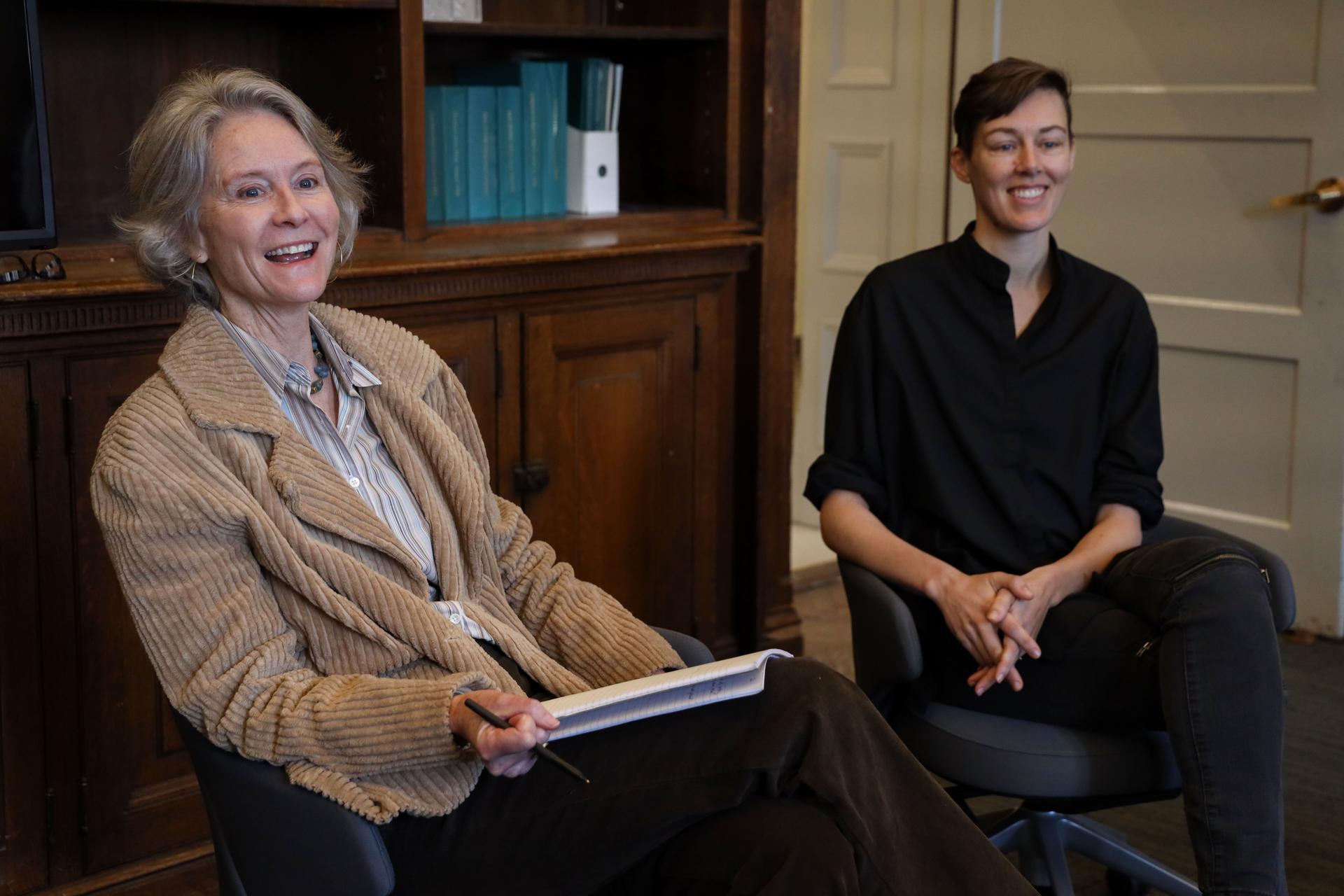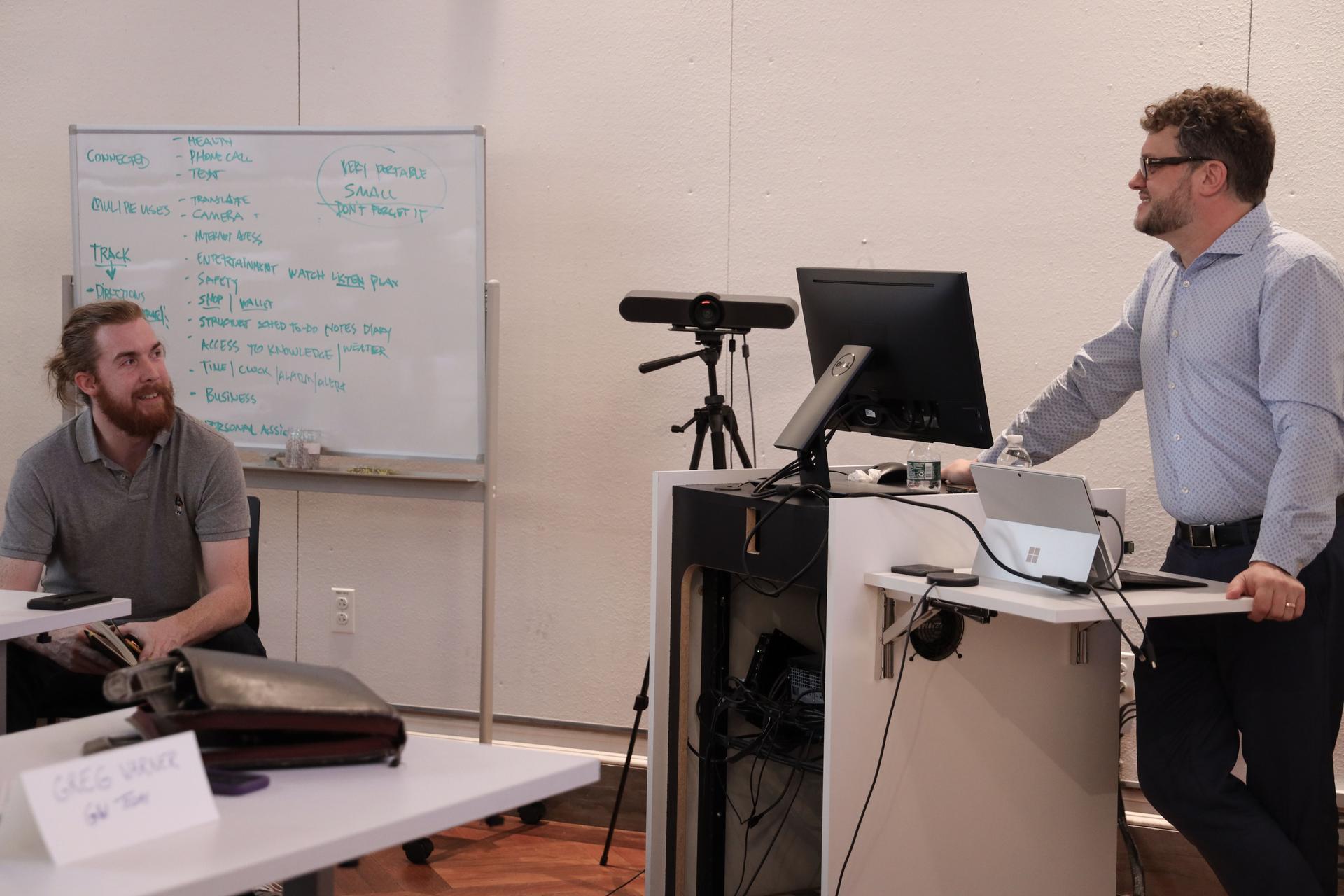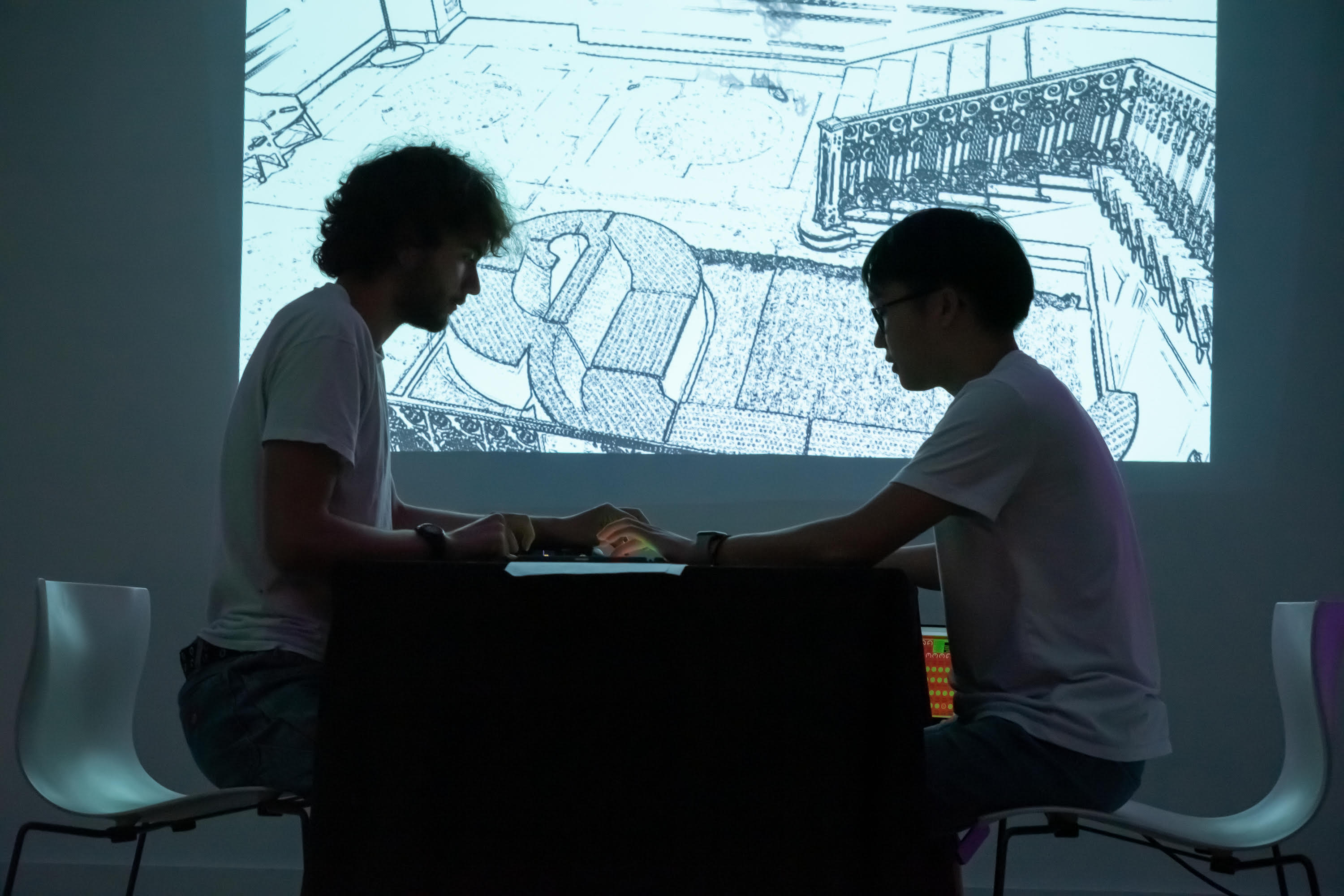Differing curatorial approaches were presented in a workshop by Mary Morton, curator and head of the department of French paintings at the National Gallery of Art, and Caroline Woolard, this year’s William Wilson Corcoran Visiting Professor of Community Engagement, at GW’s Corcoran School of the Arts and Design. The workshop was one of a series taught by experts from the National Gallery in a new partnership with the Corcoran School, housed in the Columbian College of Arts and Sciences.
Other workshops this semester have focused on exhibition writing, résumé preparation, website design and other topics. The series was organized by Babette Pendleton, exhibition and programming associate for the Corcoran School, who said the workshops have met her high hopes.
“I have been excited to see the range of students from various programs—even outside the Corcoran, from GW in general—which is something that we really encourage,” Pendleton said. “And it’s been very nice to see National Gallery staff interacting with our students. Many of them have offered to stay in touch with students afterwards. This kind of hands-on, professional skill-building is what we wanted the series to do.”
In talking with students, Pendleton said, she noticed that many felt there were gaps in their skill set, particularly when it came to practical career skills like constructing resumes and websites.
“I thought the National Gallery group would be the best to lead those workshops, because they’re at the top of their field,” Pendleton said.
Presenters Morton and Woolard began by speaking solo, then joined for a dialogue followed by a Q & A session. Apart from the differences in their approaches and concerns, they also touched on some points of intersection. Each presenter answered a specific question about her practice.
“Why do they do the shows they do?” Morton began. Having worked at the National Gallery for 13 years, she said, “We have been lucky to do shows we thought were important.” Often, she said, museum directors ask for shows designed with financial considerations uppermost in mind.
Morton’s special area of expertise is 19th-century French painting; she has curated shows, for example, on Gustave Courbet’s contributions to landscape painting and Paul Cezanne’s portraits—in both cases, not necessarily the first genres people associate with each artist.
“Acquisitions often drive exhibitions in museums,” Morton said, given the institution’s investment. Another way shows are planned, she added, is through brainstorming with colleagues who say, “Let’s do that—it hasn’t been done.”
Because she is a government employee paid by tax dollars, Morton said, she considers herself and co-workers at the National Gallery public servants.
“I work for you,” she said. “The collection belongs to you.”
One of the most interesting figures Morton discussed was Gustave Caillebotte, presented in an exhibition at the National Gallery in 2015. He was a wealthy and generous patron of other Impressionists, less well known for his own paintings. His money insulated him from the need to sell his work, which kept it in private hands. Another factor contributing to his lower profile may be that Paul Durand-Ruel, an art dealer who advanced the careers of many Impressionist painters, was a social conservative who didn’t appreciate Caillebotte’s subject matter, which often had tougher subjects and homoerotic appeal.
Woolard organized her remarks around a question she asks herself: “Where do the things you make want to go?” A logical next question involves who can help them get there. “In my experience, it’s important to not only make the thing, but make the network,” Woolard said. “Does it want to live in a museum, a home, a parking lot, a garden, a library or maybe in memory only? And who will help you get there? A roommate, a curator, a publicist, some community-based organization or a librarian? My work involves making things and imagining that they can get to a location that might not exist yet, that we need to build together.”
Speaking of her desire to connect with the solidarity economy, Woolard explained that it is a movement pursuing sustainable and equitable community control of work, food, housing, technology and culture. “Cultural practice (making things) and redistributing money and power go together,” Woolard said. “You can think of this like a Möbius strip.”
Creating community groups, Woolard said, is akin to what was done by Durand-Ruel and others to create the Impressionist movement.
During the Q & A that concluded the workshop, Woolard spoke of the tricky dynamics that can be involved in working in a community when its individual members don’t like each other, which she and Morton agreed is not a requirement provided group members share a common purpose.





